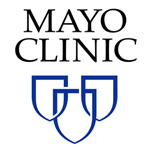 In March, the U.S. Patent and Trademark Office issued U.S. Patent No. 8,401,801, entitled "Methods for Selecting Medications." The '801 patent, which is assigned to the Mayo Foundation for Medical Education and Research, contains claims that share some similarities with the claims in U.S. Patent No. 6,680,302, which was licensed to Prometheus Laboratories, Inc., and which was at issue in Mayo Collaborative Services v. Prometheus Laboratories, Inc.
In March, the U.S. Patent and Trademark Office issued U.S. Patent No. 8,401,801, entitled "Methods for Selecting Medications." The '801 patent, which is assigned to the Mayo Foundation for Medical Education and Research, contains claims that share some similarities with the claims in U.S. Patent No. 6,680,302, which was licensed to Prometheus Laboratories, Inc., and which was at issue in Mayo Collaborative Services v. Prometheus Laboratories, Inc.
The claimed methods of the '801 patent include obtaining a biological sample from a patient and determining the patient's genotype for a panel of genes. Then, based on the genotype for the panel of genes, a clinician would select a psychotropic medication for the patient, which according to the patent, provides a safe method to avoid potentially dangerous side effects. The genes of interest in the '801 patent include at least three cytochrome P450 genes and a serotonin transporter gene. These genes are known to be important for drug metabolism and neurotransmission, respectively, and when examined individually or collectively, may be correlated to a patient's sensitivity or resistance to a given medication.
A specific example of a gene of interest in the patent is the P450 CYP2D6, a gene with many known alleles corresponding to increased or decreased drug metabolizing activity. For example, the CYP2D6*4 allele results in a truncated version of the gene's protein that does not have catalytic activity. Therefore, a patient with the CYP2D6*4 allele would be determined to be a poor metabolizer and assigned to an appropriate medication profile that provides medications that are acceptable for use or medications to be used with caution under close monitoring. By determining a patient's genotype for the panel of genes claimed, a practitioner can use the methods of the invention to anticipate side effects to a medication and allow a clinician to avoid a number of medications a patient may not tolerate.
The two independent method claims recite a long list of genes and alleles to be examined in step (1) and an even longer list of medications to select from based on the patient's genotype in step (3). Abridged versions of claims 1 and 2 recite (with emphasis added):
1. A method of administering an antidepressant medication to a patient in need thereof comprising:
(1) determining the patient[']s genotype for a panel of genes comprising the following: . . .
(2) assigning a metabolic phenotype to the patient based on the genotype of the cytochrome P450 genes in (1), wherein the metabolic phenotype is selected from poor (P), intermediate (I), and extensive (E), and said phenotype is assigned based upon the number of functional alleles for each cytochrome P450 gene as follows: P=no fully functional alleles and either one or no partially functional alleles, I=either one fully functional allele and a non-functional allele or two partially functional alleles, and E=either one fully functional allele and one partially functional allele or two fully functional alleles; and
(3) administering to the patient an antidepressant medication selected from the group consisting of: . . . .
2. A method of administering an antidepressant medication to a patient in need thereof comprising:
(1) determining the patients genotype for following panel of genes: . . .
(2) assigning a metabolic phenotype to the patient based on the genotype of the cytochrome P450 genes in (1), wherein the metabolic phenotype is selected from poor (P), intermediate (I), and extensive (E), and said phenotype is assigned based upon the number of functional alleles for each cytochrome P450 gene as follows: P=either two partially functional alleles or two increased functional alleles, I=either one fully functional allele and a partially functional allele or one fully functional allele and an increased functional allele, and E=either one partially functional allele and one increased functional allele or two fully functional alleles; and
(3) administering to the patient an antidepressant medication selected from the group consisting of: . . . .
As at least two dozen alleles are to be tested for a given patient, and the list of potential medications to be administered in claim 2 is three pages long. The '801 patent also includes claims directed to methods that "further compris[e] receiving, in a computer system, the patients genotype for the panel of genes, said computer system comprising a database, wherein said database comprises a plurality of antidepressant medication profiles," and "[a] non-transitory computer readable medium containing executable instructions that when executed cause a processor to perform operations comprising: (a) receiving a patient's genotype for a panel of genes . . . (b) assigning a metabolic phenotype to the patient based on the genotype of the cytochrome P450 genes in (1) . . . and (c) outputting a list of medications suitable for administering to the patient . . . ."